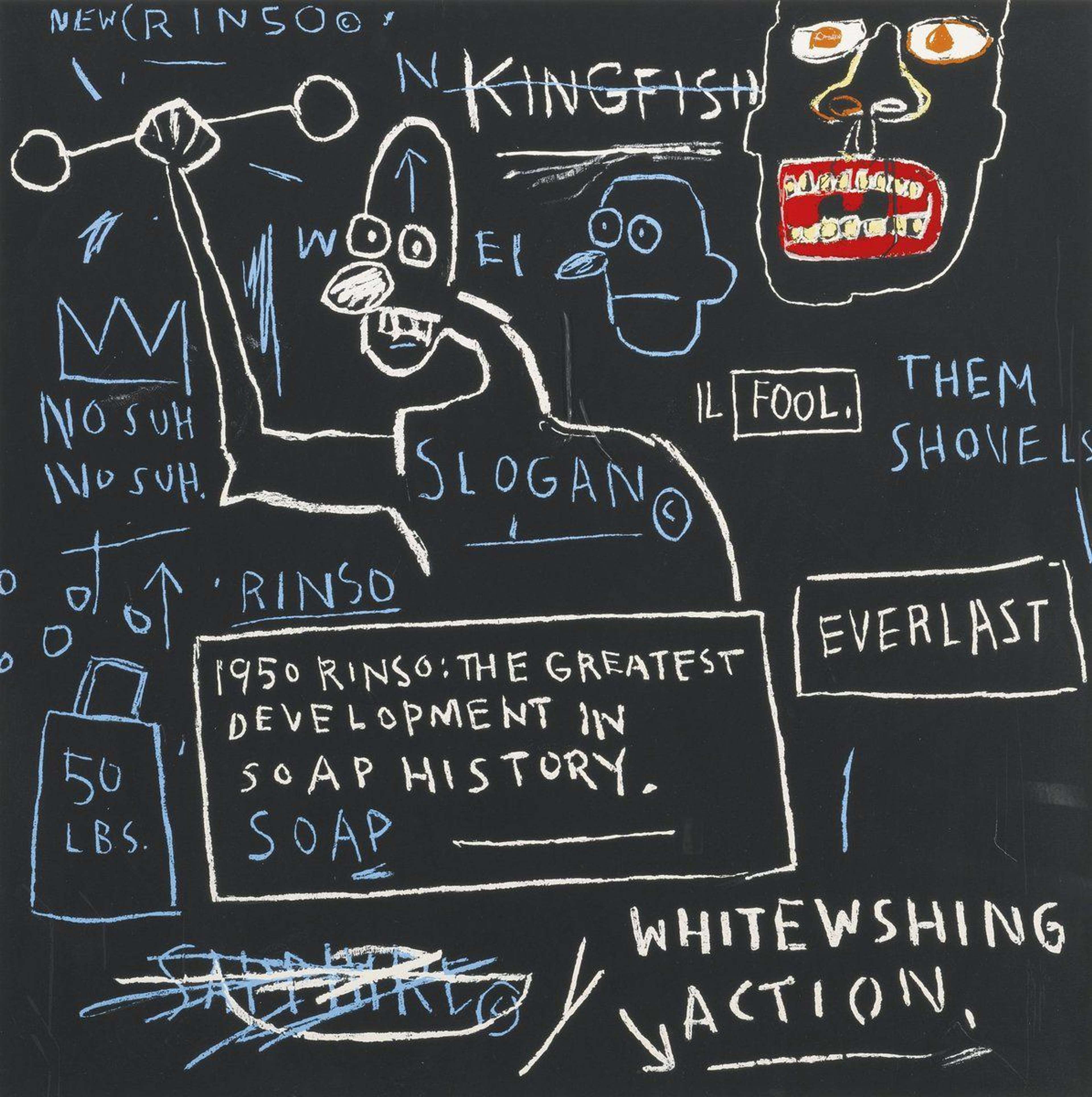
Rinso

Rinso
Unsigned Print
Jean-Michel Basquiat
£60,000-£80,000
$120,000-$160,000 Value Indicator
$110,000-$150,000 Value Indicator
¥570,000-¥750,000 Value Indicator
€70,000-€90,000 Value Indicator
$620,000-$830,000 Value Indicator
¥12,460,000-¥16,610,000 Value Indicator
$80,000-$110,000 Value Indicator
There aren't enough data points on this work for a comprehensive result. Please speak to a specialist by making an enquiry.
102 x 102cm, Edition of 85, Screenprint
Auction Results

Track auction value trend
Meaning & Analysis
Rinso is a screen print in colours by Jean-Michel Basquiat produced in 1982. In Rinso, the central figure is drawn in loose yet strident white marks, appearing to grit their teeth, with a tool raised in a clenched fist, perhaps depicting a protesting industrial or agricultural worker. The reference to ‘them shovels’ lends further evidence to this interpretation. The text across the chest of the figure reads ‘SLOGAN’ next to the copyright symbol, a motif which appears recurrently throughout Basquiat’s oeuvre in unexpected contexts.
Basquiat was intent on revealing society's paradoxes and contradictions. In this image we can observe an overarching tension between linear progress and fevers of demolition and reconstruction, manifested by the contrasts between the text reading ‘EVERLAST’ and ‘NEW RINSO’. Rinso is said to be ‘the greatest development in soap history’, contrasting against the social upheaval suggested by the protesting industrial worker. The squares which entrap the various textbites could at once represent soap bars and construction bricks.
The chaotic interplay of text and image in Rinso is emblematic of what Olivia Laing calls the “graphomaniac quality to almost all of Basquiat’s work”. She notes that “he liked to scribble, to amend, to footnote, to second-guess and to correct himself. Words jumped out at him, from the back of cereal boxes or subway ads, and he stayed alert to their subversive properties, their double and hidden meaning”.